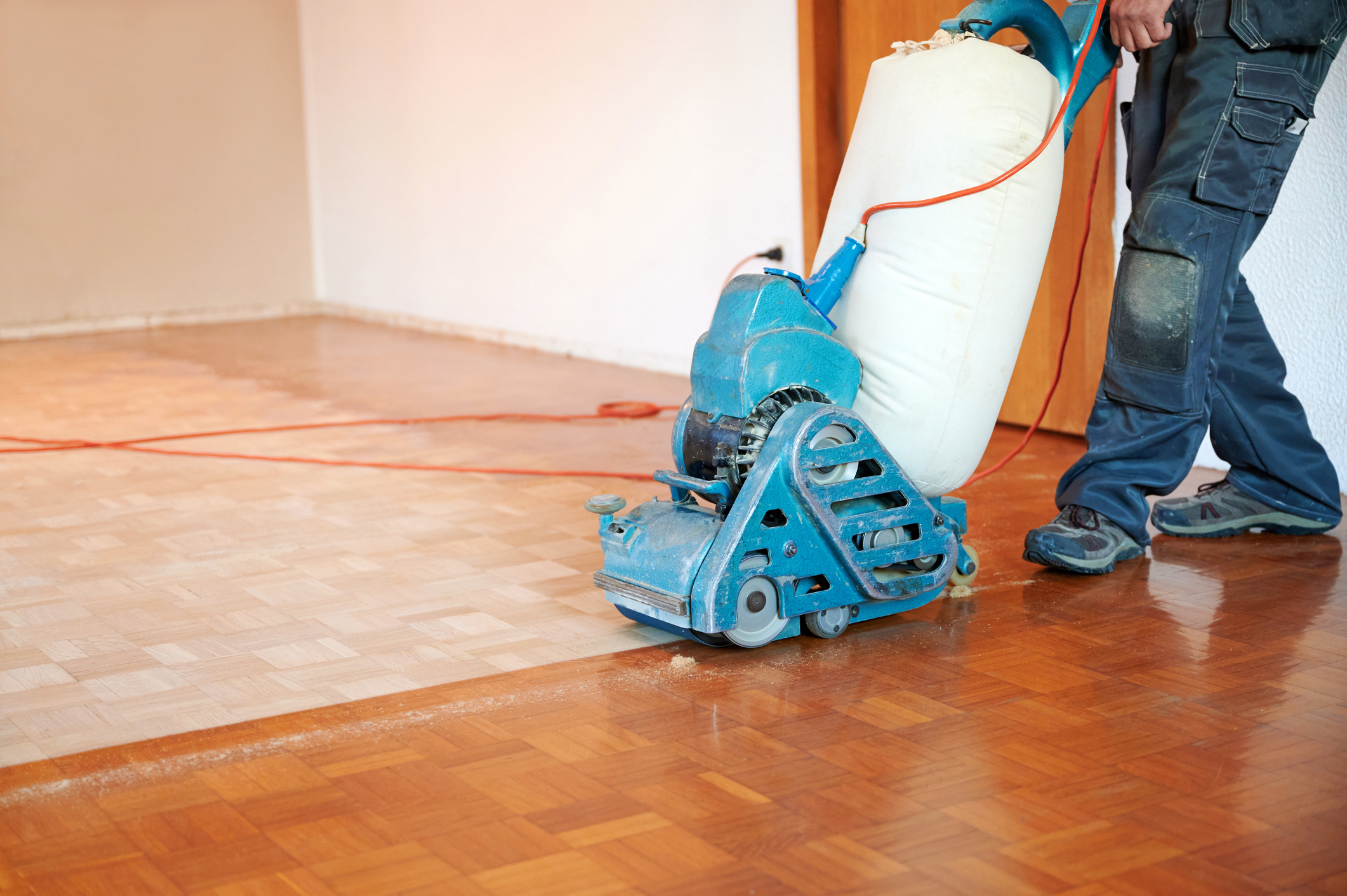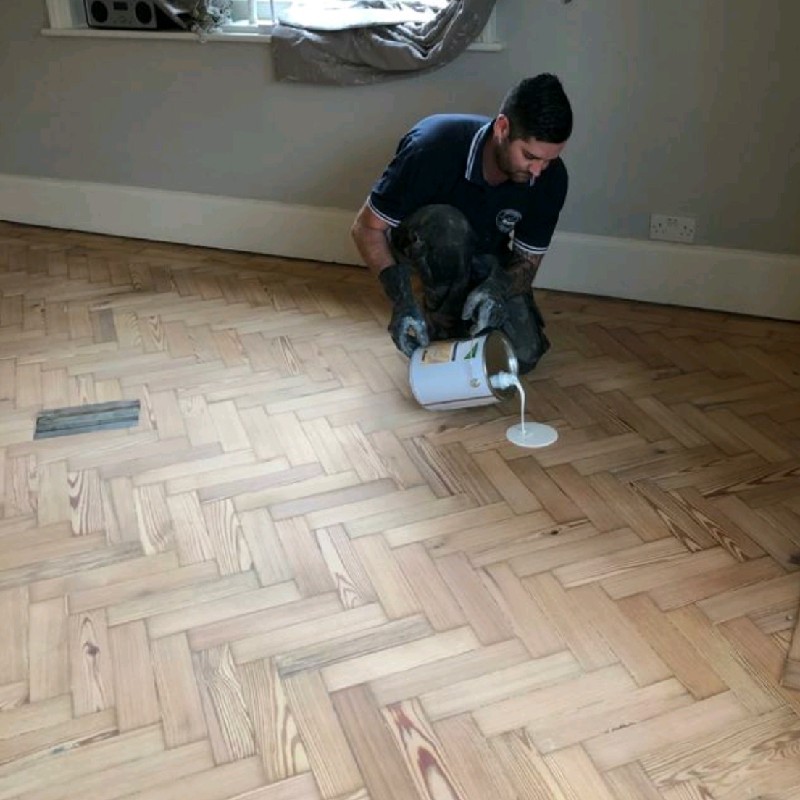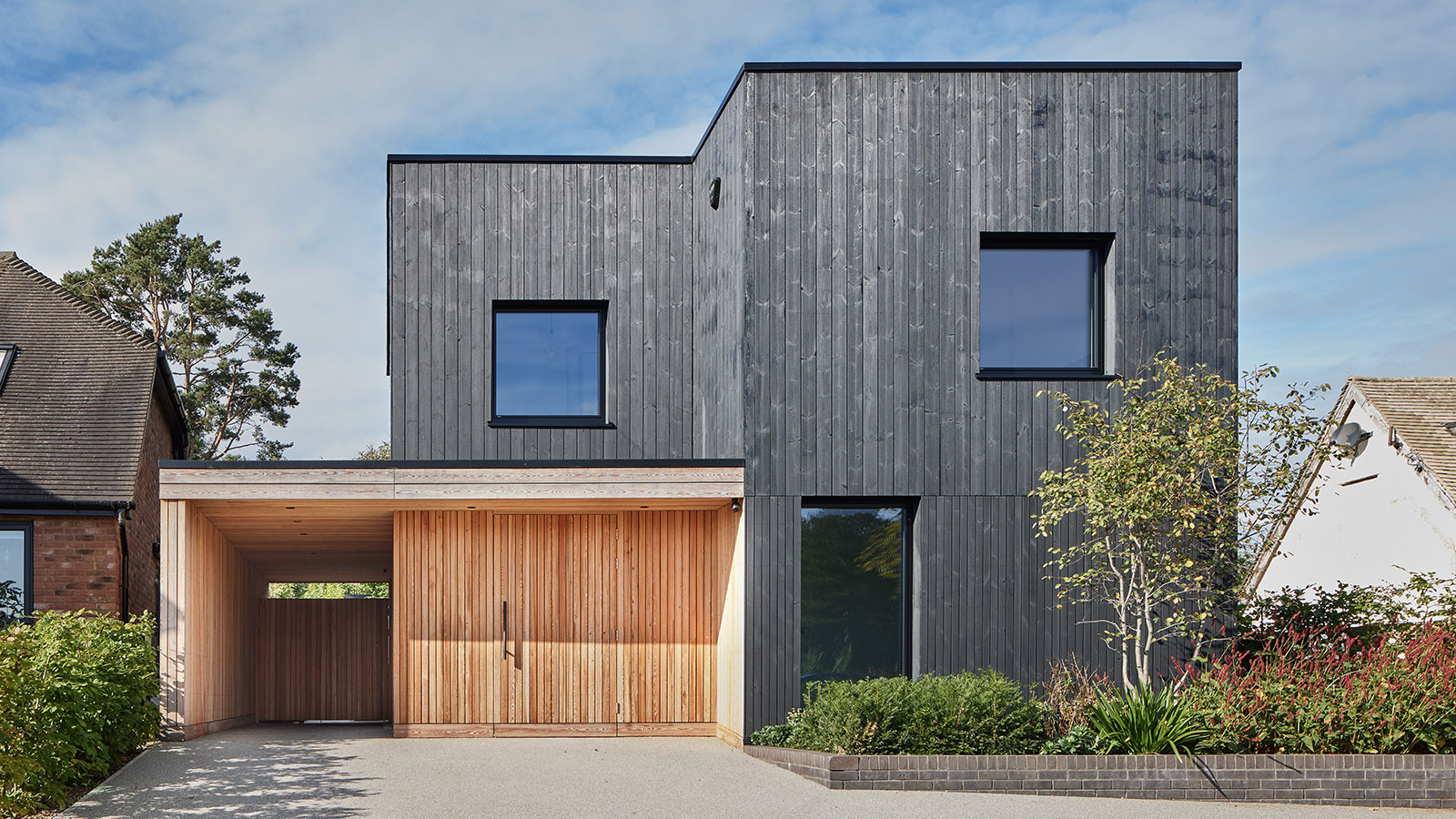
There are plenty of good reasons to sand a wood floor. It can make the floor (or subfloor) level, removes stains or unwanted paint, and gives the wood a silky-smooth finish that feels great underfoot. I should know, as I sanded my self-layed parquet floor using orbital sanders.
One thing that might put you off sanding wood floors is uncertainty over the costs, which vary depending on factors such as whether you opt for DIY or professional sanding, the area of the floor and even the type of wood.
To help you budget for wood floor sanding, we quizzed Harry Young, a property developer and Director of HeyProp.co.uk, and David Clarke, Owner of Absolute Floor Sanding Ltd., to get their take on the typical project costs.
Read on for our breakdown of equipment, materials and labour costs for sanding wood floors – and how to save money on your floor sanding project.

HeyProp.co.uk is a property development company operating in and around Hampshire. Director, Harry Young, calls upon 13 years of experience in the construction industry to inform his development projects, which have often involved wood floor sanding.
Factors affecting wood floor sanding costs
There’s no set cost for sanding a wood floor. According to Harry Young, Director of HeyProp.co.uk, the outlay is affected by several factors, most importantly the floor’s condition and the type of wood.
“A pine floor in good condition might be at the lower end of the cost range, whereas sanding hardwoods like oak or walnut tends to push costs higher – particularly if there’s a heavy varnish or prior damage,” he says.
“Older floors that have been painted or poorly maintained, or where the wood is warped, can demand more time and effort to restore properly. This increases the labour time and material requirements, which reflects in the final cost.”
Bring your dream home to life with expert advice, how to guides and design inspiration. Sign up for our newsletter and get two free tickets to a Homebuilding & Renovating Show near you.
Of course, the size of your wood floor will also affect the cost of sanding – most significantly if you’re getting it done by a professional. A larger floor will cost more to sand than a similar, smaller wood floor, but those with large floors might get better value for money.
“Minimum call-out fees often make smaller rooms disproportionately more expensive per square metre, whereas large open-plan spaces can benefit from economies of scale,” says Young.
Location also comes into play. Getting a floor sanded typically costs more in areas with a higher cost of living (especially London) or in remote and underserviced regions.

Breakdown of wood floor sanding costs
Equipment purchase or rental (for DIY sanding)
- Floor sander: ~£25-85/day (rental). You’re much more likely to rent this large, specialised type of sander than buy one. Rates at leading tool hire providers such as HSS start from around £25/day. A floor sander is the most efficient tool for sanding a wood floor, but they’re heavy, require total concentration to use and sometimes lack the precision of a smaller, lighter sander. Typically, you’d also hire an edge sander to sand the edges of the room. Higher-quality sanders rented by specialist providers come at higher rates.
- Orbital sander: ~£100. This versatile type of sander is a slow but precise option for sanding wood floors. (I used a few different models to sand my oak floor). I’d advise using a powerful, corded model like the Makita BO5041/2 an orbital sander you can buy on (£107.18, Amazon) to ensure reasonably fast progress and avoid frequent battery recharging.
- Palm sander: ~£30. With their square sanding pads, palm sanders are ideal for sanding at the square corners of a room, where an orbital sander can’t reach. If using this tool for detail work only, you can get away with a reasonably priced model (there are several options for palm sanders to buy at B&Q)
- Dust extractor: ~£80/day. Hiring a contractor-grade dust extractor (from a provider such as HSS) will greatly reduce the health and hygiene burdens created by dust released into the property. Make sure the extractor’s hose will fit the dust extraction port of your chosen sander.
Materials (mostly for DIY sanding)
Shop prudently, and you should be able to buy all the materials needed to sand and refinish your wood floor for under £100.
- Sanding sheets: ~£10. You’ll need multiple grades of sandpaper to progressively sand your wood floor to a smoother finish. These must be compatible with your chosen sander tool, and prices vary depending on type, quality and brand. For reference, I bought a 100-set of 125mm orbital sander sanding discs (various grades) from Amazon for under £10, and this was far more than I needed to sand one floor.
- Finish: ~£15. After sanding your wood floor, you should finish it with an oil or varnish to protect the fresh surface from marks, stains and water damage. I recommend Osmo Polyx-Oil (from £11.80, Wood Finishes Direct). You’ll need a paintbrush to apply the product.
- Wood filler and knife: ~£15. Filler can smooth out minor irregularities in sanded wood flooring, such as nail holes in reclaimed floorboards, or gouge marks from your sander. Good ones like Osmo Wood Filler can be bought for less than £10, and they come in various colours to match different woods. You can use a filling knife (£6, B&Q) to apply the hard-setting putty while it’s soft.
- PPE: ~£50. The dust released by sanding poses health risks if not dealt with properly. You’ll need an excellent dust mask or a cheap respirator that you can buy at Screwfix, well-fitting safety goggles, purchasable at B&Q and protective gloves, that you can also buy at B&Q. I’d also recommend using a kneeling pad (£7.97, Screwfix), and you should put up a plastic dust barrier door (£11.99, B&Q) in your doorframe (even if there’s an actual door behind it) to minimise the ingress of dust into other rooms. These reusable items can be purchased for around £50 in total – a small price to pay for safer sanding.
You might already have some of these resources at home, in which case the added expense will be lower.
When choosing a finishing product to apply after sanding, consider its longevity and maintenance requirements, as these will affect your costs long-term.
“Oils, stains and lacquers all come with their own costs and maintenance implications. Some finishes are more labour-intensive or require multiple coats, which adds to the time and total cost,” Young notes.
Professional floor sanding costs
The costs of getting a wood floor professionally sanded and refinished in the UK range considerably. Some providers advertise rates as low as £20 per square metre, while others change as much as £65psm.
“As a rough guide, we go in at around £40psm, including VAT,” says David Clarke, Owner of the floor sanding provider, Absolute Floor Sanding Ltd.
“That factors in everything from our wages and running costs to materials. We’re priced a little bit above the middle ground in the trade, as we use good products and all the guys take regular training courses.”
Based on Clarke’s pricing, getting a 20㎡ wood floor professionally sanded and refinished would cost around £800.
With that said, if you’re happy to do the refinishing yourself, you should be able to secure a lower rate per square metre for sanding.
“I generally allocate around £25-35 per square metre if I’m getting a wood floor professionally sanded during a property development project,” says Young.
If your budget is lower, DIY sanding might be the best option.
“The DIY floor sanding market is taking off, and we do now offer sander hire,” says Clarke.
“On average you save 50-60%. For a job that I’d quote for a grand, you’ve spent £400-500 by the end of the hire. Some people do a fantastic job with the same good equipment we would use.”

David Clarke is the owner of Absolute Floor Sanding Ltd., an Essex-based company which provides professional sanding, floor installation and sander hire services.
Additional costs to consider
If all goes perfectly, the costs listed above will make up the bulk of your wood floor sanding budget. However, some additional expenses might creep in for certain projects.
During sanding, you may notice that some floorboards need to be replaced or repaired in order to make the floor secure and level. This is one of those small jobs that comes at a relatively high cost when done professionally, with estimated prices of around £250 to cover one day’s work.
A DIY floorboard replacement can cost far less. Some individual boards retail at under £10 (like this one from Wickes), and the cost of screws for fixing from Screwfix is negligible. That said, you may require a circular saw to adjust the board(s), and a good cordless drill will be essential.
Usually, the dust from sanding a wood floor can be bagged and disposed of in the (outdoor) rubbish bin. However, it might not be permissible to burn scrap wood from the project, especially if it has been treated with a substance such as wood preserver that might release fumes when burned. If a large quantity of scrap wood is left over, you might need to have it collected in a skip (ideally along with other waste from your home improvement projects).
No matter how carefully you’ve planned your wood floor sanding project, it’s wise to set some budget aside for unexpected costs.
“I usually include a small contingency (around 10%) for unexpected subfloor issues or additional prep work, especially in period properties,” says Young.

FAQs
What is the overall cost of sanding a wood floor?
As we’ve seen, many different factors affect the cost of sanding a wood floor, including the floor size and material, whether you choose professional or DIY sanding, and which materials you use to complete the project. This means the overall project cost can fall anywhere within a wide price range.
“In my property development projects across Hampshire and the South of England, the cost of sanding wood floors has generally ranged between £700 and £2,000, depending on the floor’s size, type, and overall condition,” says Young.
“For example, in a recent renovation of a 1930s semi-detached property in Southampton, we had approximately 30 square metres of original pine floorboards. The sanding, sealing, and finishing work came in at just under £1,000, using a local specialist who offered a mid-range lacquer finish. The boards were in fair condition, but some patching and nail removal were needed beforehand, which added to the prep time.”
“In contrast, for a larger four-bedroom property in Southampton, we worked with around 50 square metres of engineered oak flooring that required light sanding and re-oiling. Because the boards had bevelled edges and a custom-tinted oil finish, the cost rose to £1,850.”
What are the best ways to reduce the cost of wood floor sanding?
If your aim is to minimise the cost of sanding your wood floor, there are plenty of avenues to explore. One option is doing the job yourself
“DIY can offer savings, especially in smaller rooms or where a perfect finish isn’t essential, but many people underestimate how quickly the extras add up,” says Young.
“A common issue with DIY sanding is the quality of sanding sheets provided by hire shops. These are often lower-grade, rip easily and wear out quickly, especially when removing paint or old varnish. This means you’ll likely go through far more than expected, adding to your overall spend.
“A better approach is to buy professional-grade abrasives separately, which can cost slightly more per sheet, at around £1.50 to £2.50 each, but last longer and perform more effectively. Over the course of a full floor sanding project, this often works out cheaper and certainly less frustrating.”
If hiring a professional, there are steps you can take to reduce the bill.
“We charge if the customer leaves furniture in the room, as it can mean a two-day job becomes a three-day, and we have to factor in the guys’ costs,” says Clarke of Absolute Floor Sanding Ltd.. He advises that haggling on price can also reduce your sanding costs – but only if you’re willing to compromise on the finish.
“Generally we don’t lower our prices; we lower our products,” he says.
“We use Loba brand lacquers which certainly aren’t the cheapest, but if the client wants a lower price we can use cheaper lacquer.”
What are the possible hidden costs of sanding a wood floor?
While sanding seems straightforward, several hidden costs can catch you off guard if you’re not experienced,” says Young.
“One of the most common issues is discovering that the floorboards are too thin for another round of sanding. This often happens in period properties where the original boards have already been sanded multiple times over decades. If there's not enough depth left, you may need to replace sections or even install new flooring, which is far costlier.
“Another surprise I've encountered is the need for extensive preparation work. For example, floors that have been covered in adhesive, bitumen, or layers of old paint often require aggressive sanding or chemical treatments before a finish can even be considered. This increases both the time and the cost.”
Hopefully, you'll now have a better idea of the likely costs involved in sanding your wood floor. If the figures are too high for your current home renovation budget, there are other options to revive your flooring which might prove less expensive, including varnishing or painting floorboards.
Pete Wise is a freelance writer and keen DIYer from Leeds. Pete's tool reviews have featured in titles including Homebuilding & Renovating, Ideal Home and The Independent. He also writes features and news articles for publications such as The Guardian, BBC Good Food and T3. When he isn't busy writing, Pete can often be found at libraries, pubs and live music venues. He finds tile-cutting strangely zen.

